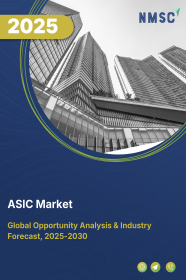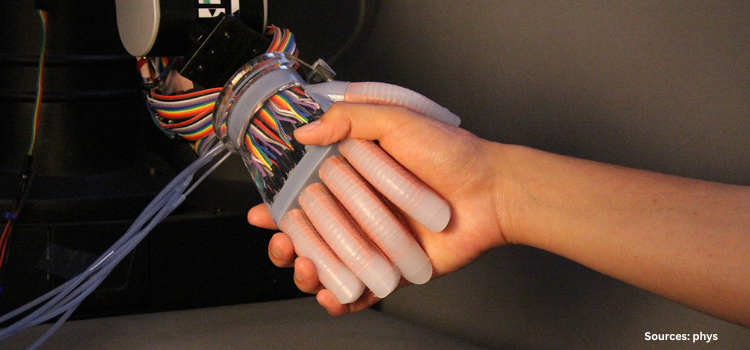Europe Eye Tracking Market by Type (Head Mounted Eye Tracker and Remote Eye Tracker), by Component (Hardware and Software), by Application (Assistive Communication, Academic Research, Consumer Behavior Research, Usability Testing and Other Applications), and by End-User Industry (Retail, Automotive, Healthcare, Government and Others)- Opportunity Analysis and Industry Forecast, 2024– 2030
Industry: Semiconductor & Electronics | Publish Date: 02-Jan-2025 | No of Pages: 188 | No. of Tables: 137 | No. of Figures: 82 | Format: PDF | Report Code : SE2450
US Tariff Impact on Europe Eye Tracking Market
Trump Tariffs Are Reshaping Global Business
Europe Eye Tracking Market Overview
The Europe Eye Tracking Market size was valued at USD 206.4 million in 2023, and is predicted to reach USD 1252.0 million by 2030, at a CAGR of 28.2% from 2024 to 2030. The market is a comprehensive ecosystem of products, services, and technologies designed to measure and analyze eye movements, gaze direction, and fixation points. This market includes specialized hardware such as cameras, sensors, and light sources, as well as software solutions for data processing and analysis.
Eye tracking, also known as eye monitoring systems are applied across various industries such as psychology, market research, user experience testing, and human-computer interaction to provide insights into consumer behavior, visual perception, and interface usability. In the contemporary landscape of user experience and human-computer interaction, eye tracking emerges as an indispensable tool, offering invaluable insights into user engagement and interface usability. By meticulously scrutinizing how users navigate digital interfaces and websites, designers can discern pain points, optimize layouts, and refine interactions to foster seamless user experiences.
Increasing Adoption of Eye-Tracking Technology in Retail and FMCG is Driving the Market Growth
The eye-tracking market in Europe is driven by the increasing adoption of eye-tracking technology in retail, particularly within the Fast-Moving Consumer Goods (FMCG) sector, aimed at boosting sales revenue. Eye monitoring systems integrated with advanced algorithms in department stores provide insights into customer behavior by analyzing where shoppers look, how long they focus on products, and their overall engagement levels.
This technology enables retailers to optimize store layouts, product placements, and promotional strategies based on real-time consumer data, enhancing customer experiences and driving sales growth. Additionally, government and private sector investments in countries like Germany, the U.K., and France further support the Europe eye tracking market expansion, while the technology's application in military expeditions contributes to its broader adoption and development.
Government and Private Sector Investments Fuel the Growth of Market in Europe
The eye monitoring systems in developed countries including Germany, the UK, and France is experiencing robust growth due to increasing investments and funding from both government and private organizations. These investments are aimed at advancing research and development in eye-tracking technology, enhancing its applications across various sectors including healthcare, retail, and education.
Government initiatives aimed at promoting innovation and technological advancements further bolster market growth, facilitating the adoption of eye-tracking systems in diverse industries. This trend underscores a concerted effort to leverage eye-tracking technology for improved consumer insights, medical diagnostics, and educational enhancements, driving significant expansion in the Europe eye tracking market trends.
Proliferation of Alternative Technologies Hinder the Market Expansion
The proliferation of alternative technologies, including gesture recognition, unimodal methods, and multimodal activity recognition, emerges as a significant restraint on the Europe eye tracking market growth. Gesture recognition, for instance, employs mathematical algorithms to interpret human gestures, enabling device control through simple movements. This technology is particularly adept at recognizing emotions conveyed through facial expressions, hand gestures, and body language.
In sectors such as consumer electronics and gaming, where the ability to predict user behavior is paramount, these alternative technologies offer valuable insights that extend beyond the capabilities of traditional eye tracking. Consequently, the availability and adoption of such alternatives hinder the Europe eye tracking market growth potential by providing competitive solutions that cater to diverse user needs and preferences.
Integration of AR and VR in Eye Tracking Technology Create Future Market Prospects
The swift integration of eye-tracking technology across various sectors, including augmented reality (AR), virtual reality (VR), lie-detection systems, and cognitive testing, is poised to unlock significant opportunities within the Europe eye tracking market.
This technology plays a crucial role in enhancing image clarity and reducing eye strain in AR and VR applications, thereby elevating user engagement and comfort levels. It benefits from natural stimuli and controlled data collection, making it a dynamic field driven by startups and investments from tech giants such as Apple, Google, Facebook, and Samsung.
For instance, in March 2022, Mojo Vision announced a new advanced prototype of its AR smart contact lens Mojo Lens. The prototype includes various new hardware features and advanced technologies such as advanced display, communications, eye tracking technology, and a power system embedded into the lens. It allows users to access timely information quickly and discreetly without forcing them to look down at a screen.
Germany Dominates the Europe Eye Tracking Market Share
The thriving automotive industry in Germany plays a crucial role in driving the growth of the vision monitoring sector. Eye-tracking technology has various applications in this field, including enhancing driver safety and improving the overall user experience in vehicles. It enables advanced driver assistance systems and interior controls that respond to a driver's gaze, ultimately making driving safer and more convenient.
For instance, in May 2023, BMW introduced a unique eye-tracking lane-changing technology in the new BMW 5 Series sedan. This innovative feature leverages eye-tracking technology to enhance lane-changing assistance, promoting safer and more efficient driving experiences. This represents a significant advancement in automotive safety and driver assistance systems, further solidifying the integration of eye tracking technology into the automotive sector.
Eye-tracking technology has become a crucial tool for German businesses in refining their market research and advertising strategies. By tracking consumers' eye movements, companies gain valuable insights into how they engage with advertisements, websites, and products. These insights enable German businesses to tailor their marketing efforts more effectively, ensuring that their advertising resonates with their target audience and ultimately leads to better business outcomes.
Spain to Witness Substantial Growth in the Market
The implementation of advanced eye tracking technology in Spain is a significantly driving the Europe eye tracking market growth. This transformative technology has revolutionized the accessibility and usability of communication tools, particularly benefiting individuals with disabilities, by offering a more intuitive and efficient means of interaction.
For example, Irisbond's enhanced eye-tracking experience launched in September 2023 with iPadOS17, significantly enhancing the functionality of communication tools, especially for users of Alternative and Augmentative Communication (AAC) systems, and empowering individuals with disabilities to communicate more effectively, leading to a surge in demand for eye tracking solutions and thus, propelling the Europe eye tracking market demand.
The Spanish government's substantial investments in research and development (R&D) have significantly bolstered the market potential in Europe. According to recent data from the OECD, Spain's gross domestic spending on R&D reached USD 24,007 million in 2022.
This demonstrates the government's strong commitment to fostering an environment that supports the adoption and development of advanced technologies, including eye tracking. The increased R&D funding and focus on innovation are expected to have a profound impact on the trajectory of the eye tracking sector’s growth in Spain, as the country continues to prioritize the advancement of cutting-edge technologies.
Competitive Landscape
The market players operating in the Europe eye tracking industry include Tobii AB, Smart Eye AB, Lattice Semiconductor Corp, Ogilvy, Seeing Machines Limited, AVSimulation, Lumen, Eyetech Digital Systems, Inc., EyeTracking, Gazepoint, Eyegaze, Eyeware Tech, SR Research Ltd., Pupil Labs, and Irisbond Crowdbonding, S.L. and others.
Europe Eye Tracking Market Key Segments
By Type
-
Head Mounted Eye Tracker
-
Remote Eye Tracker
By Component
-
Hardware
-
Software
By Application
-
Assistive Communication
-
Academic Research
-
Consumer Behavior Research
-
Usability Testing
-
Other Applications
By End-User Industry
-
Retail
-
Automotive
-
Healthcare
-
Government
-
Others
By Country
-
The U.K.
-
Germany
-
France
-
Italy
-
Spain
-
Russia
-
Rest of Europe
REPORT SCOPE AND SEGMENTATION:
|
Parameters |
Details |
|
Market Size in 2023 |
USD 206.4 Million |
|
Revenue Forecast in 2030 |
USD 1252.0 Million |
|
Growth Rate |
CAGR of 28.2% from 2024 to 2030 |
|
Analysis Period |
2023–2030 |
|
Base Year Considered |
2023 |
|
Forecast Period |
2024–2030 |
|
Market Size Estimation |
Million (USD) |
|
Growth Factors |
|
|
Countries Covered |
7 |
|
Companies Profiled |
15 |
|
Market Share |
Available for 10 companies |
|
Customization Scope |
|
|
Pricing and Purchase Options |
Avail customized purchase options to meet your exact research needs. |
|
Customization Scope |
Free customization (equivalent up to 80 working hours of analysts) after purchase. Addition or alteration to country, regional, and segment scope. |
|
Pricing and Purchase Options |
Avail customized purchase options to meet your exact research needs. |
KEY PLAYERS
-
Tobii AB
-
Smart Eye AB
-
Lattice Semiconductor Corp
-
Ogilvy
-
Seeing Machines Limited
-
AVSimulation
-
Lumen
-
Eyetech Digital Systems, Inc.
-
EyeTracking
-
Gazepoint
-
Eyegaze
-
Eyeware Tech
-
SR Research Ltd.
-
Pupil Labs
-
Irisbond Crowdbonding, S.L.














 Speak to Our Analyst
Speak to Our Analyst




















